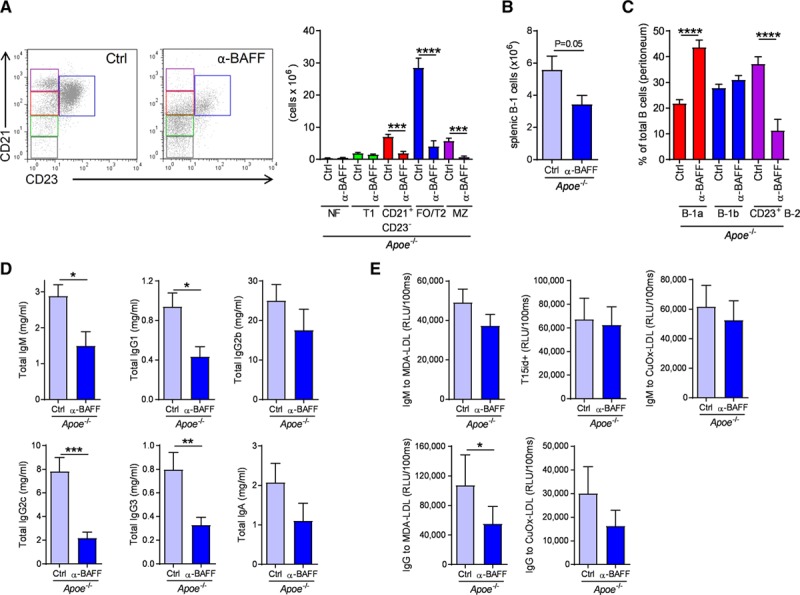Figure 1.

Anti-B cell–activating factor (BAFF) antibody treatment depletes mature B cells and reduces plasma total Ig titers in Apoe-/- mice. (A) Representative flow cytometry plots and bar graphs show absolute numbers of FO/T2 (blue), MZ (purple), CD21+CD23− B cells (red), T1 cells (green), and NF cells (gray), (B) absolute numbers of splenic B-1 cells defined as B220lowIgM+CD43+, (C) frequencies of peritoneal B-1a, B-1b, CD23+ B-2 cells, (D) total IgM, IgG1, IgG2b, IgG2c, IgG3, and IgA plasma antibody titers, and (E) plasma levels of T15id+ IgM, MDA−, and CuOx-LDL–specific IgG and IgM antibodies. Data are derived from Apoe−/− mice treated with a control (Ctrl) or an anti-BAFF neutralizing antibody (α-BAFF) while they were fed an atherogenic diet for 6 weeks (n=8 to 9 mice per group). All results show mean±SEM. *P<0.05, **P<0.01, ***P<0.001, ****P<0.0001 (Mann-Whitney U or unpaired Student’s t test). CuOx indicates CuSO4-oxidized; Ig, immunoglobulin; LDL, low-density lipoprotein; MDA, malondialdehyde-modified; MZ, marginal zone; NF, newly formed; and RLU, relative light units.
